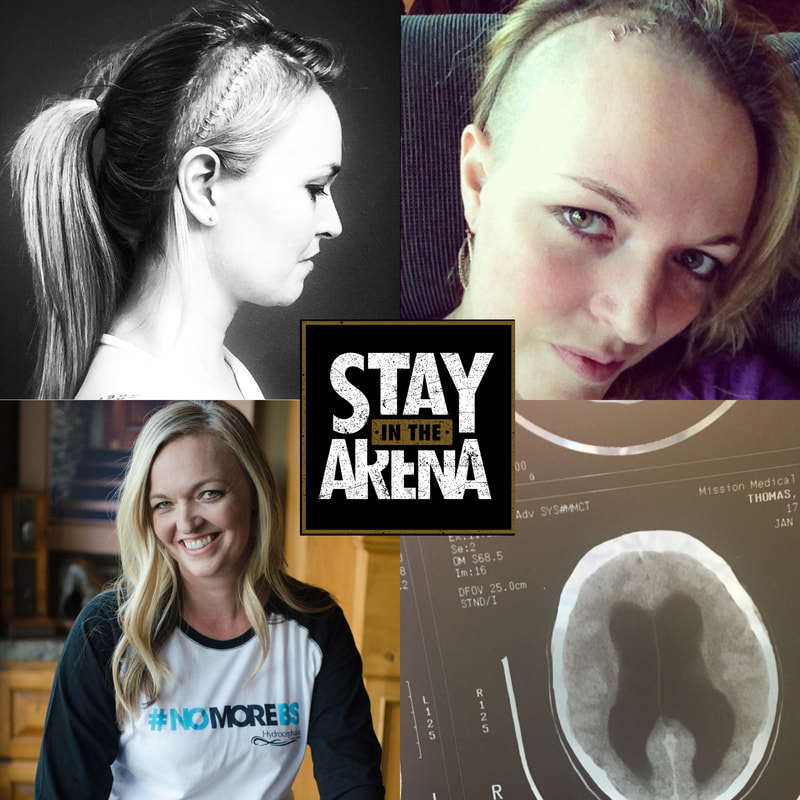 In January of 2016, I wrote a blog post titled “When are they going to get this thing figured out??” I had just established my website the month before and I had no idea how much sharing that one piece of writing would change my life. At the time, I was recovering from back-to-back shunt surgeries, and I posted it primarily to answer the common questions about hydrocephalus that I received from my own family and friends. But it was also a bit of a personal rant… the things I needed to say, in my own plain-English, non-technical words, to help me process what I was going through. Perhaps, because of that rawness, it definitely hit a chord in the community – with literally hundreds of people contacting me and messaging me. And since that initial post, I have reposted it every time I have had another brain surgery. Over the past two years, it’s been shared all over the internet, and read more than 20,000 times total. This week, I will be undergoing another shunt revision surgery – my 21st brain surgery. As shocking as that is for my family and friends, it’s not shocking for many people in the hydrocephalus community, who have walked a parallel path. While I am certainly hesitant and naturally apprehensive about going through this process again, I have complete confidence that my team has put incredible care into making this decision. And even though I’ve been really sick off and on all year and my pain is high, I’m physically and mentally strong right now, which I know will make a difference. I am well supported and we are focused. That original blog post is still very applicable today and I’m still humbled that it has touched so many people around the world. But today, I decided to do an updated version with the same concept. These are the 10 most common questions I get regarding my condition and these are my own raw, unfiltered responses to these questions. More or less, I wanted to answer these questions as if we were sitting together and you were asking them. I hope that in some way, by sharing these experiences and thoughts, I can provide you with some comfort and information. Knowing that there are others out there who are going through similar experiences is one of the most incredible things that the internet has the power to provide. And when you can get some positive input in regards to a very negative experience, it can truly change your path. That being said, I have to remind you that I am not a doctor or any type of medical professional, and this is not intended to be educational at all. It is simply my own answers, about my own diagnosis and experiences. As we move forward towards better answers for hydrocephalus, may we always remember that the credit belongs to the man who is actually in the arena, willing to stay, and battle – even when he fails again and again. May we band together in solidarity and strength, carrying those who need support, and remembering every day that the only thing that truly matters is human connection and trust. 1. What is hydrocephalus? Hydrocephalus is defined as an abnormal accumulation of cerebral spinal fluid (CSF) in the ventricles of the brain. When I explain it to people, I tell them that my brain does not drain spinal fluid properly. I developed obstructive hydrocephalus in my teens and was diagnosed at age 17. There is currently no cure for hydrocephalus and all treatment options include brain surgery. For more information, visit www.hydroassoc.org 2. Why have you had so many surgeries? The most common way to treat hydrocephalus is with a shunt, which is a valve and catheter system that diverts the fluid from the brain where it has built up and deposits it elsewhere in your body, where it can be absorbed. Hydrocephalus is shockingly common – even though many people have never heard of it. In the United States alone, there is a hydrocephalus related surgery every 15 minutes and it is the leading cause of pediatric brain surgeries. While some patients are able to go many years without trouble with their shunt system, statistically, 50% of all shunts fail in the first two years. That being said, there are a lot of us that have a really hard time with our shunts – the only way to fix them or replace parts is brain surgery. Click here for more information on my medical story. 3. Why don’t the surgeries work? Honestly, this is a frustrating mystery and I think every neurosurgeon in America would tell you that. Again, I am not qualified to answer this question, but there are many reasons a shunt (or ETV) will fail. They occlude (clog), the catheters get brittle and break, they come unhooked, etc. I have averaged 3-4 shunt surgeries a year for the past several years – until this last one, which lasted almost one year. 4. Who is involved in your care? I have been absolutely blessed and have put together an incredible team of physicians and therapists over the years. Of course I have a neurosurgeon, a primary care physician, and a pain management doctor. In addition to that, I have a strength coach that is very involved in my care, and a mental coach. When people ask me about how I manage my hydrocephalus, I tell them it takes a village. I have more information on the Resources page of my website, as well as the Hydro Treatments & Therapies page. 5. How do they decide to do another brain surgery? My neurosurgeon makes the decision to operate only when he feels like that is the only remaining option. He has been my surgeon for a number of years and he knows me very well. I feel like this has always been an advantage for me, because he knows what I function and look like when I’m doing well, versus when I am having serious issues. From time to time, he has consulted other neurosurgeons to look at my case and I always appreciate how thorough he has been. In my opinion, the most crucial decision you make is to establish care with a neurosurgeon who is a good fit for you. I personally travel 3 hours from where I live to see mine, because he is someone I trust and can communicate with. It has made all the difference in the world for me. 6. Is a shunt the only option for treatment? Some patients are candidates for a procedure called an Endoscopic Third Ventriculostomy (or ETV). Whether or not a neurosurgeon may decide to go with this option rather than a shunt, has to do with the patient, the neurosurgeon, and primarily the cause of the hydrocephalus that they have. It’s not an option for certain types of hydrocephalus. I had this surgery when I was 19 years old and while it is still viable today, my brain also needs a shunt to keep up. 7. How do you prepare for brain surgery (assuming it’s not an emergency surgery)? I try my best to prepare for surgery by getting things organized to the best of my ability. This includes unplugging from my job as much as possible, getting some good food options prepped, and making sure I have someone to stay with me during the process. In addition, I work on mentally preparing myself for the process, using visualization, meditation, and affirmation. It’s incredibly important for me to go into surgery feeling relaxed and confident in my team. There is always uncertainty with brain surgery and staying mentally in control of my thoughts and emotions are very important. 8. What are the concerns and risks? As with all surgical procedures, there are risks involved. The concerns can also change from surgery to surgery and from patient to patient. But in my case, there has always been a high level of concern about the risk of infection and seizures. I have had a lot of trouble with my head wounds sealing up as well, so there are concerns with wound infection. 9. What is the projected or estimated recovery time from your shunt revision surgeries? The correct answer to this question is that it’s different for every patient and for every surgery. I have had many shunt revision surgeries that have had similar recovery timelines, but then I’ve had others that have been much easier or much harder. That being said, in my own experience, I would say that my average recovery time to get back to 100% strength and energy is about 6 weeks. I am very physically active and I do my best to return to activity as soon as possible. I usually am off of work for about 4-5 days, then slowly integrate back into daily life. 10. How does this process affect the people who are close to you? I am incredibly fortunate and have an amazing network of family and friends that support me. I know that it is frustrating and painful for them to watch me go through the repeated surgeries and the chronic pain issues that come along with them, but I am thankful beyond words that they choose to walk beside me on this path. In my life, I see that as one of the blessings I have received and that I never take for granted. As a family, as a tribe, and as a team, we go through all of this together. We win and we lose together. In my blogging, I often use the hashtag #we. This is because when I speak of my journey, I use the term “we” as an authentic representation of the fact that I don’t do this alone. I walk this road with the most brilliant and loyal humans, and I am grateful. To my Loves: We are ready. We fight. We love. We stay in the arena. Here’s to the relentless pursuit of everything important. Thank you for holding my head and my heart. Peace, Amy
8 Comments
|
AuthorMy name is Amy but friends and family call me Am. I am a lover of dogs, good whiskey, and strength training. I'm a brain surgery survivor (x31), a fiddle player, a construction designer, and a boxing enthusiast. I have six real siblings, and five fake brothers. I love deeply, and consider my close friends to be family. Archives
February 2022
Categories
All
|



 RSS Feed
RSS Feed